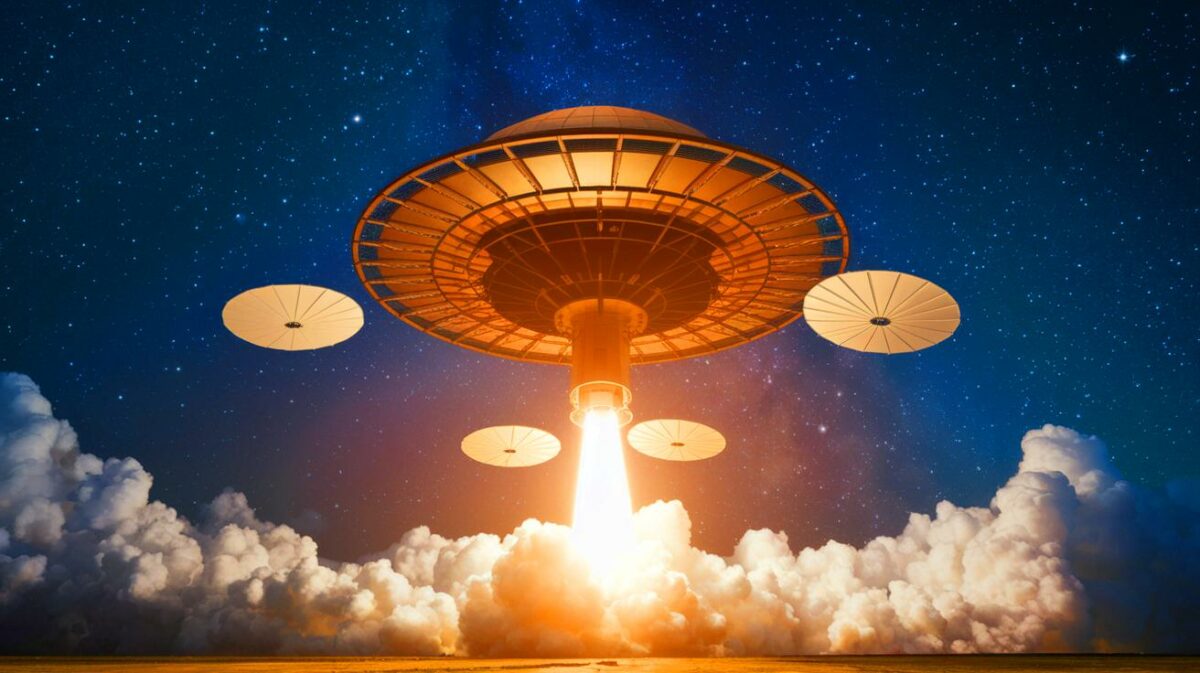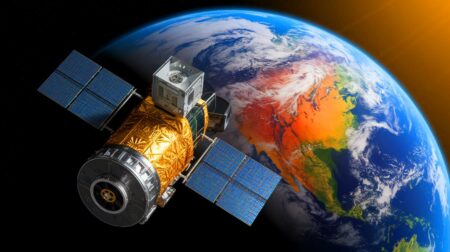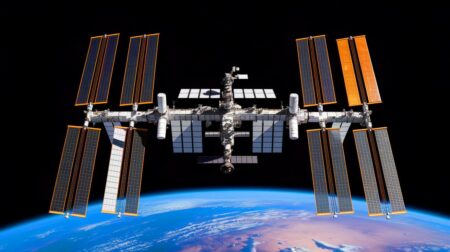| IN A NUTSHELL |
|
In a groundbreaking move that could forever change the landscape of space exploration, SpinLaunch, a California-based startup, is set to launch hundreds of flattened “microsatellites” into low-Earth orbit (LEO). This innovative approach, involving a giant centrifugal cannon, promises not only to revolutionize satellite deployment but also to position SpinLaunch as a formidable competitor to established players like SpaceX. With the potential to set a new record for simultaneous satellite launches, this development is a significant milestone in the quest for more cost-effective and environmentally friendly space missions.
A New Era of Satellite Launches
SpinLaunch’s pioneering technology involves using a giant centrifugal cannon to accelerate spacecraft at incredible speeds. This method is designed to reduce costs and minimize environmental impact, offering a fresh perspective on how satellites can be deployed. The company’s Meridian Space constellation is set to be a game-changer, with the first batch of pancake-like satellites ready to be launched as soon as next year. These microsatellites, each 7.5 feet wide and weighing approximately 154 pounds, will be stacked like pancakes in a “launch bus,” making them significantly lighter than their competitors. This unique design and deployment method could allow SpinLaunch to set a new record for the most spacecraft launched at once, a title currently held by SpaceX.
The development of this innovative launch system is supported by substantial funding, with SpinLaunch recently securing an additional $12 million from Kongsberg Defence and Aerospace (KDA). This brings their total funding close to $150 million, underscoring the confidence investors have in their groundbreaking technology. The involvement of KDA’s NanoAvionics in building the first batch of 250 satellites further bolsters the project’s credibility, setting the stage for a successful launch in 2026.
The Revolutionary Launch System
SpinLaunch’s unique approach to satellite deployment involves a novel launch system that uses a vacuum-sealed chamber and spinning arms to accelerate payloads. This Suborbital Accelerator has already proven its mettle, having launched 10 rockets into suborbital flight from New Mexico. The process involves spinning objects to speeds of up to 5,000 mph, subjecting them to forces as high as 10,000 Gs before they are fired into the upper atmosphere. The success of these test launches, including the most recent in September 2022, sets a solid foundation for the upcoming orbital demonstration, where the same machine will be used to propel payloads into LEO.
The main advantage of this system is its cost-efficiency. SpinLaunch predicts that future commercial launches could cost between $1,250 and $2,500 per kilogram, less than half the cost of SpaceX’s Falcon 9 rockets. Additionally, the absence of greenhouse gas emissions during the launch and the elimination of the need for booster rockets contribute to a more sustainable approach to space travel, reducing both environmental impact and space debris.
Implications for the Satellite Industry
The implementation of SpinLaunch’s technology could have far-reaching implications for the satellite industry. By offering a more affordable and environmentally friendly launch option, SpinLaunch is poised to challenge established players and reshape the competitive landscape. Their Meridian Space constellation aims to provide superfast communications services at a lower price point than its competitors, potentially democratizing access to space-based services.
Moreover, the company’s plans to expand their capabilities with a larger Orbital Accelerator could see them launching up to five commercial payloads into space daily. This ambitious goal, if achieved, would dramatically increase the frequency and accessibility of satellite launches, opening new opportunities for industries reliant on satellite technology. However, this increased activity in LEO raises concerns about potential issues such as spacecraft collisions, light pollution, and interference with astronomical observations.
AI Outperforms Chinese Pilots in High-Stakes Aerial Combat: A Glimpse into the Future of Warfare
Looking Ahead: Challenges and Opportunities
While SpinLaunch’s innovations present exciting opportunities, they also come with challenges that must be addressed. The potential for increased satellite activity in LEO could exacerbate existing problems such as space debris and atmospheric pollution from re-entering spacecraft. As the company moves forward with its ambitious plans, it will be crucial to consider these factors and work towards sustainable solutions that balance growth with responsibility.
The success of SpinLaunch’s upcoming launches could set a new standard for satellite deployment, offering a glimpse into a future where space is more accessible and sustainable. However, the question remains: how will the industry adapt to these changes and what measures will be taken to mitigate the potential risks associated with increased activity in low-Earth orbit?
Did you like it? 4.3/5 (20)












Wow, a giant spinning cannon sounds like something out of a sci-fi movie! 🚀
Sounds like something straight outta one of Roosevelt’s fever-dreams. “Giant spinning centrifugal cannons capable of firing ilederhosen sauerkraut and branschwieger directly at our Atlantic Coast, Eleanor! “Now Franklin…” NO! I saw them Eleanor! In my dream, in my dream! They’re making them by the hundreds, Eleanor! At Peenemünde, Eleanor… AT PEENEMÜNDE!!! “Go back to SLEEP, Franklin.”
It is Not a Cannon, it’s a Centrifugal Ejector of Sattelite discs…(Little bigger than DVD’s.)
You mean more stupidity and garbage. Frozen pancakes are like bullets. Dah…
How will the centrifugal cannon handle the fragile electronics in these microsatellites during launch?
It’s a huge problem all the electronics on the circuit boards has to be drenched in epoxy to keep it stable so it keeps working after the incredibly inertia is imparted onto the electronics.
Care to cite that with actual test data?
Fragile electronics also gave to endure launches from rockets, I am skeptical that you have real data to back up your distaste for the new tech. I would love to see fewer rocket launches if possible, and this system is very promising for small satellites-
Interesting, what a great idea that we can be able to reduce space debris in low earth orbit — by sending hundreds of these satellites right into it 🤣
You can’t stop progress.
It said something about commercial flights. I really don’t think a person can withstand 10,000 gs. I don’t think it’ll impact Musk or any other space program because, they can put people in space, this is just an intense frisbee flinger.
Come on that’s off of bostons don’t look back album cover from the 80’s.
The next catastrophe in the making but just a pipe dream for now.
I saw this picture and thought Yay,The band Boston has a new LP out.
They obviously won’t be able to use fragile electronics.
Except that not a single person is worried about this company being competition anytime soon. They’ve been tinkering with their spinning launch system for like a decade and are no closer to making it happen. In fact they plan to attempt to play catch up to starlink with conventional Rockets. Literally no one’s scared including China and SpaceX and it’s deeply embarrassing that you wrote that headline and put your name with it.
So true,so funny.
lol was the author shaming necessary? You clicked. Me too.
Why did you even put China in the headline? I agree with the other guy, it is embarrassing you included that.
Isn’t there a risk of creating even more space debris with all these launches?
Interesting approach, but it sounds like a lot of energy is used to spin those satellites.
All I’m hearing is a giant influx of “UFO/uap” sightings reported. Sigh.
Can the technology be adapted for larger payloads, or is it limited to microsatellites?
When you think you have the answer something completely out of the box comes along,and turns a. So-called genius into a has been,,,thats called lateral thinking, or advancement/progress And it’s beautiful.
Is this a sustainable solution given the potential increase in space traffic?
My dick gets hard every time my wife turns the ON switch to ON on her microwave. How can l fix this?
The idea of a spinning cannon is fascinating. Hope it doesn’t just spin out of control! 😜
Having so many aluminum satellites– already 8000 from musk, in LEO is the biggest geoengineering project ever undertaken. It’s not only destroying the ozone and letting more of the sun’s energy in (which is poised to create more superstorms and unusual weather), but the movement of such a vast array is also electrifying the lithosphere and will contribute to greater earthquake and volcanic activity. Every one of Earth’s countries should be worried but i see nothing about their concerns in this ignorant click bait. Geostationary satellites are the technology we should strive for. Not this. Already 1000 satellites have fallen out of the UNSUSTAINABLE LEO orbit, and attacked the O3 with their vaporized aluminum… Stop the madness. Can the united states stop the madness?
I’m skeptical. Can this really compete with SpaceX’s proven technology?
Well,it aren’t a quick-hardcore-state-subsidy-fix-like random or another generally/normally non-innovative unknown Xi-chinese start-up,so it might cut it or be rivaling it,if not,be as watchable in that regard/field only👍🙃
I hope that it puts Elonia Muskrat out of business
Only a poorly educated buffoon would buy this horsechit.
Does this mean we’ll have better and more affordable internet connections soon?
Trump will never allow it to compete with musk.. Musk will steal the plans and claim it as his own..
No. Next question…
Why is China issuing a full-scale alert over this? Seems like an overreaction.
They’re not Don’t believe every unsubstantiated headline you read.
There not, just more fake news
I’m excited to see how this technology evolves. Innovation in space tech is always thrilling!
What are the environmental impacts of using a giant spinning cannon for launches?
SpinLaunch seems promising, but how do they ensure the satellites don’t collide with each other?
Gotta blame the UFO sightings on the Chinese yeah? “That disk shaped object, is just a Chinese satellite little Timmy”
This could revolutionize space launches, but what about the safety of the satellites?
How do they ensure the satellites are properly oriented after such a high-speed launch?
Isn’t the G-force too high for the delicate instruments on these satellites?
Spin launch faces many hurdles in physics before it is even possible to make this work. The article touches on the 10,000 g force BEFORE it launches. I doubt most satellites can withstand that kind of pressure to begin with and that is before the payload even leaves the vacuum chamber and collides with the atmosphere, causing an insane g load on the satellite. Also, their suborbital launches mean very little. Every time I throw a baseball it is also on a suborbital trajectory. This tech makes a lot more sense for the lunar surface or mars where the atmosphere is nearly nonexistent. I’m highly skeptical it could ever be practical on earth.
I am highly skeptical that the designers have not considered the forces involved from day 1. Do you know something that you are not saying? ‘Common sense’ is rarely insightful in the case of complex science.
Solid state is solid after all, and the G forces on a launch are not nothing.
My personal fantasy is a space elevator, for which we have some tech but not to scale- which is why there is not yet a company setting out to build one!
What are the potential geopolitical implications of this technology? 🤔
I’m all for innovation, but this just sounds too futuristic to be true!
Is this technology patented, or can other companies start using it too?
Will this new method reduce the overall cost of satellite services?
Thank you for the informative article! This could be a game-changer for satellite launches. 😊
Yeah…well I guess alot of typical ufo upa’s sightings really are true…but they are THIS LOOKS EXACTLY LIKE UFO’S and could be mistaken as these spinning pancake sattelites!!!!!!!!!!!
Are there any plans to test this technology with manned missions in the future?
Manned vehicles capable of surviving a stress of 10,000 Gs are definitely out of the question, at least for the foreseeable future.
Sure. All we have to do is find a “man” that can withstand 10,000 g’s. Shouldn’t be too hard — we’re already up to 9. (Btw, that’s not 9,000 — it’s 9 — 9,991 less than 10,000.)
Yes, they plan on spinning humans at the 5,000 mph the article mentions, as well as the 10,000 G-force required. You would be nothing but liquid in a spacesuit bro
How does the cost of developing and maintaining this system compare to traditional rockets?
Can this method be used for launching supplies to the International Space Station?
Looks like the space race is heating up again, this time with pancakes! 🥞🛰️
Yeah 👍 you’re right about pancakes 🥞 coming to the race
Wouldn’t a spinning cannon cause a lot of vibrations? How do they deal with that?
What happens if the spinning mechanism fails? Seems like a lot could go wrong.
Fake news.
How does this technology affect the current concerns about light pollution in space?
This concept is wild! Who knew pancakes could fly? 🥞😂
Everyone who’s ever made a pancake
How much cheaper are these launches compared to traditional methods?
You could try actually reading the article & not just the title. What a concept.
China is not mentioned once outside the headline. Reporting sensationalism and blocking. Bye@
Yes, they plan on spinning humans at the 5,000 mph the article mentions, as well as the 10,000 G-force required. You would be nothing but liquid in a spacesuit bro
That is a the most shameful of clickbait-and-switch headlines I’ve seen in a while.
Congratulations Sustainability News. You’re on my block list.
I think the $150M investment is more a reflection of the potential benefits rather than the likelihood of success. In this industry $150M is chickenfeed.
At first glance, the disc shape of the satellites obviates the problems of imparted spin from the launch system, except any imparted spin will be in the wrong orientation, yet will be essential for stabilisation.
I could be wrong. I hope to see this work. But I’m not holding my breath.
Full-Scale Alert, I agree.
Blocking.
What a joke. More hoopla and wasted time spent pretending we don’t already have zero point energy technology along with antigravity capabilities. Tell me you’re withholding advanced technology from the public without telling me you’re doing that.
Wow
What is that AI image at the top of the article even supposed to be? Like a hodgepodge of “flying saucer” and “rocket launch”…
The caption doesn’t help either… Maybe that’s the prompt the AI used to hallucinate the image
Come on that’s off of bostons don’t look back album cover from the 80’s.
Can’t wait until they throw some bombs on these
Saw on my Google news feed.
Realized headline was inaccurate.
Blocked news source from my news feed
Bye
EXCEPT the article is a LIE.
The headlines says
“China Issues Full-Scale Alert”
But nowhere in the article is China ever mentioned.
More EXAGGERATED western news propaganda
Just wait until France launches their Toast arsenal…
😁
Omg, if any of u believe this total horse shit lol.
It might get them up there cheaper, but what Is the additional cost building satellites that can handle both the g-forces and friction heat shielding to get it up there, right now with rockets they don’t need to do any of that.
This thing failed terribly and is going out of business. Took a lot of money along the way
Is the dense atmospheric resistance on the way up considered? What about the heat generated by the atmospheric resistance estimated? Is the weight of heat resistance shield added to the satellite?
Just what is needed more shit in orbit
This system was debunked years ago. Why does it keep resurfacing?
And how sustainable do you think it is to continue polluting low earth orbit with this trash?
So what’s up witht the BS “China issues and alert” come on. The story should stand by itself ding dong. The fact that there will be more satellite internet service options beyond starlink and higher space collision risk are glossed over.
Future us here technology will be what we saw in sci-fi movies soon Brought to reality.If you cab dream it it can be done an lately more ai an technology is being born.
Hopefully we will start to explore ai medicine an cure disease easy or cath it before ot begins.
You can’t stop progress.
Hmmm, small nuclear warheads are in that weight range 155lbs.
Put a couple hundred on one of those satellites.
I’m sure it’s in the works.
I guess I missed the part about China in this story. It was the teaser on the headline, so one would expect it to be explained thoroughly in the accompanying article. Perhaps someone needs to retake their headline writing class.
Sure. All we have to do is find a “man” that can withstand 10,000 g’s. Shouldn’t be too hard — we’re already up to 9. (Btw, that’s not 9,000 — it’s 9 — 9,991 less than 10,000.)
Does this mean we have to wear aluminum foil on our heads 😕
Fuck China Russia Korea they can kiss my american ass let’s get back to making it ourselves again
5,000 mph isn’t even close to reaching LEO. Objects need to accelerate to and maintain a speed of 17,000 mph to achieve that. Rockets start slow but continue to build up speed the entire time. Without anything else to propel it this “bus” thing will start to decelerate the moment it’s launched.
NOOOOOO! IS EVERYONE CRAZY?!?!
Reading the comments is entertaining at least. The article is sensationalist click bait.
This spin launch stuff is what, 10 years old now and has never had a successful orbital launch. Who is spring the bill for $150 million? I have a rubber band powered rocket i want to sell them
“China Issues Full-Scale Alert”
Headline doesn’t even match the article. The editors should be fined or even fired for allowing this headline to go through.
Can Humans use it to get into space ?—_
It’s a giant disk launcher just like when I was a kid but much much bigger. 😂
I think Wile E. Coyote tried something like this…